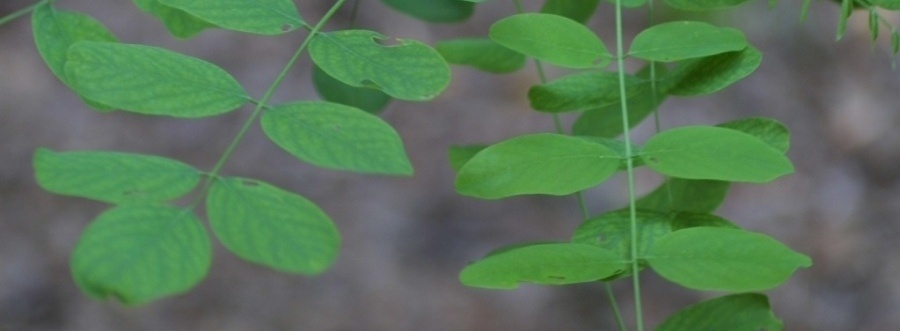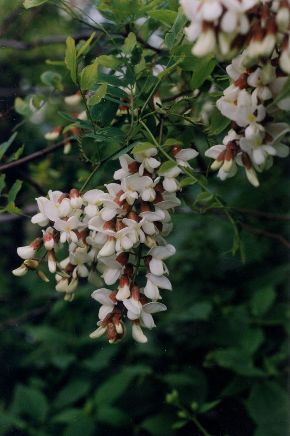
Hello and Welcome!
Thank you for stopping by my website dedicated to Robinia
pseudoacacia! My name is Jessica, and I am a student at the
University of Wisconsin La Crosse. I made this site in the
spring of 2013 as a project for my Organismal Biology class.
All of my peers have made their own web pages on a variety of
organisms as well. To take a look at some of them, check out
MultipleOrganisms.net. If you have any questions or comments
regarding my website, feel free to contact me at
klebs.jess@uwlax.edu.
For more information about myself, check out my
About Me page.
Jennifer Anderson, 2001
USDA Plant Database
 Robinia pseudoacacia, more commonly known as the black locust,
typically grow about 60 feet high and are characterized by the
beautiful white blossoms they yield in the spring. However,
their
beauty can be deceiving as the inner bark, leaves and seeds are
all toxic. It is native to North America, but has established
itself in many other parts of the world including areas in
Europe and Asia. The origin of this species' common name is a bit
misleading. A long time ago, Jesuit missionaries had thought
this tree was eaten by John the Baptist while he lived in the
wilderness. He was said to have eaten “locusts”, which are
believed to have been pods which grow on the carob tree. Since
the carob tree and the black locust resemble one another, the
black locust's name stems from this story in the Bible,
despite the confusion.
Robinia pseudoacacia, more commonly known as the black locust,
typically grow about 60 feet high and are characterized by the
beautiful white blossoms they yield in the spring. However,
their
beauty can be deceiving as the inner bark, leaves and seeds are
all toxic. It is native to North America, but has established
itself in many other parts of the world including areas in
Europe and Asia. The origin of this species' common name is a bit
misleading. A long time ago, Jesuit missionaries had thought
this tree was eaten by John the Baptist while he lived in the
wilderness. He was said to have eaten “locusts”, which are
believed to have been pods which grow on the carob tree. Since
the carob tree and the black locust resemble one another, the
black locust's name stems from this story in the Bible,
despite the confusion.
Now that you know a little bit about how the black locust came
by its common name, please read on to my other pages about Robinia
pseudoacacia to learn more! I have included a
classification
page discussing the black locust's phylogeny and where fits in with other
organisms. After that I have a habitat page that describes where
this tree lives and what kind of environment it occupies. Then there's is the
adaptation page that talks about
how the black locust has survived up to today, followed
by
pages about how the black locust acquires
nutrition and how it
reproduces.
Finally, I have a
page describing how this tree interacts with
other
organisms, and a
Fun Facts page
which talks a
little bit about how this tree is useful to us!
Read on to the classification page next to learn more about
Robinia pseudoacacia!